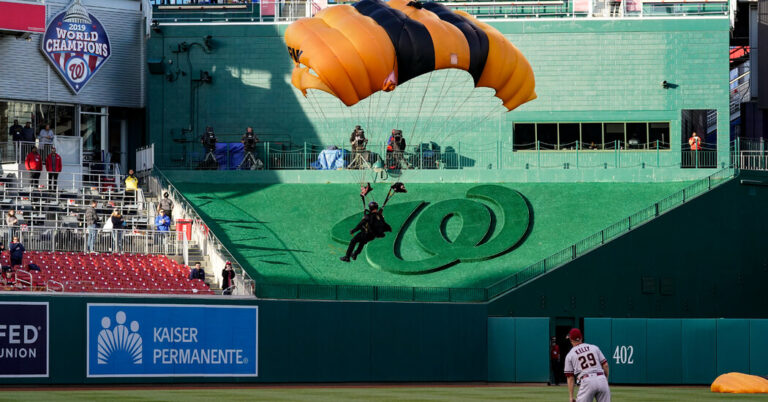A Radical Collective Takes Over One of the World’s Biggest Art Shows
I embarked on several days’ worth of nongkrong in Gudskul, arriving in the midmorning quiet to sit under the breadnut trees with anyone who was up for a chat. When the collectives purchased the property, it held an indoor soccer court, so ruangrupa kept the high roof intact and built two floors of cabins within — some with drywall and glass windows, others out of shipping containers. Across a central, tree-lined passage stand more shipping containers: double-stacked, in a bright row, like a fastidious child’s arrangement of Legos. By late afternoon, when Jakarta got its customary downpour, Gudskul purred with activity. Classes on Zoom. A tattoo parlor. A radio station called rururadio. An archivist in the compact library. A graphic-design lab. A publishing house and shop stocking Indonesian translations of world literature. Artists in their shipping-container studios. And everywhere, the sensation of slow ferment — the feeling that, as people floated through one another’s orbits, they were being creatively galvanized, working all the time toward new art and new ideas. Not grand projects necessarily, as Andan said, but small, rich narratives with great frequency.
To flesh out some of these abstractions, consider ruangrupa’s shows at two exhibitions: the Asia Pacific Triennial in Brisbane in 2012 and the São Paulo Biennial in 2014. This period proved to be a cusp, says Farid Rakun, an architect who joined ruangrupa in 2010. For Brisbane, ruangrupa invented an underground Indonesian rock band from the 1970s, created memorabilia and persuaded Brisbane rockers to testify to the band’s influence. It was wild, engrossing work, and it delighted ruangrupa, in particular, that the ruse leaked out of the museum and into real life. “Years after that, someone showed us a blog post talking about the Kuda,” Darmawan said. “I think they didn’t know it was actually fiction, because it was very serious writing, talking about how the Indonesian punk scene influenced the Brisbane punk scene.” But this was all still “closer to what people understand as art projects,” Rakun told me. São Paulo, on the other hand, became “the first time we were staging ourselves.” After that, he said, the invitations to art festivals multiplied, “boom-boom-boom-boom,” and exporting ruangrupa — its exercises in collectivity — became the convention.
At São Paulo, ruangrupa planned very little and made almost nothing. Instead, Rakun said, they replicated ruangrupa’s presence and methods on site. In advance of the biennial, they flew to Brazil twice to meet other collectives: graphic designers, architects and activists. “Tell us what’s happening in your city,” ruangrupa asked by way of research, learning in the process about the hottest karaoke songs, about São Paulo’s motorcycle taxis that resemble Jakarta’s ojeks and about a public square that an architectural collective was working to preserve. “It was their way of coming to grips with a city that was similar to Jakarta in terms of its growth and history of colonialism,” Charles Esche, the curator of that biennial, said.
In their assigned space, on the ground floor of an Oscar Niemeyer building, they laid out a scaled-down ruruhouse: couches for nongkrong, a spot for rururadio, another for a gallery. And in this home away from home, ruangrupa struck up a dialogue between Jakarta and São Paulo. The gallery hosted works by artists from the two cities. A Paulista food cart, repurposed as a movie projector, played films from the OK. Video archive and a São Paulo collective. As a rururadio stand-in, ruangrupa erected a pup tent and invited people in for karaoke; they sat cross-legged on the floor and sang Portuguese, English and Indonesian songs. Esche recalled that São Paulo’s ojek drivers — not ordinarily the kind of people who feel welcome at biennials — hung around the ruruhouse, giving rides to visitors.
Check out our Latest News and Follow us at Facebook
Original Source







